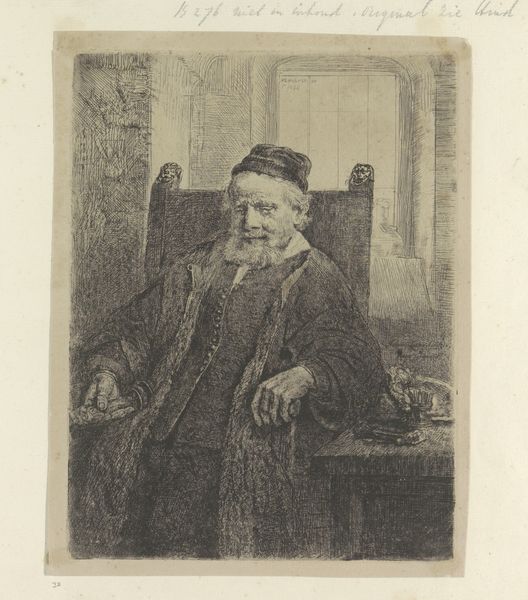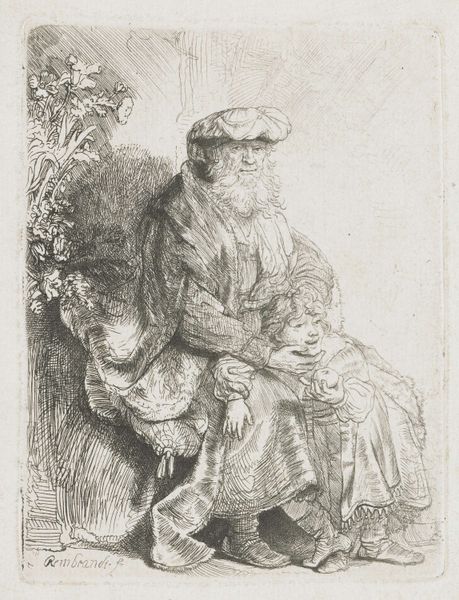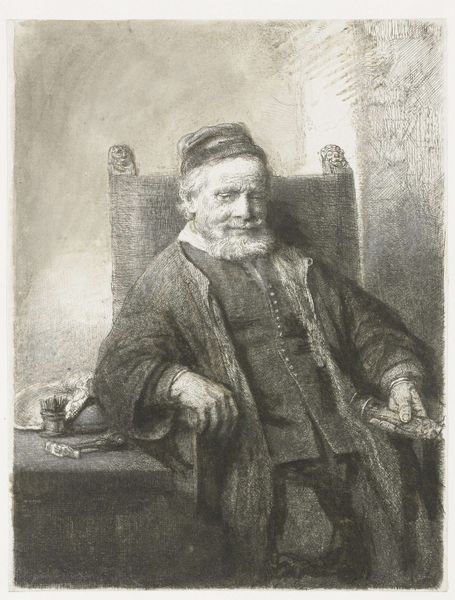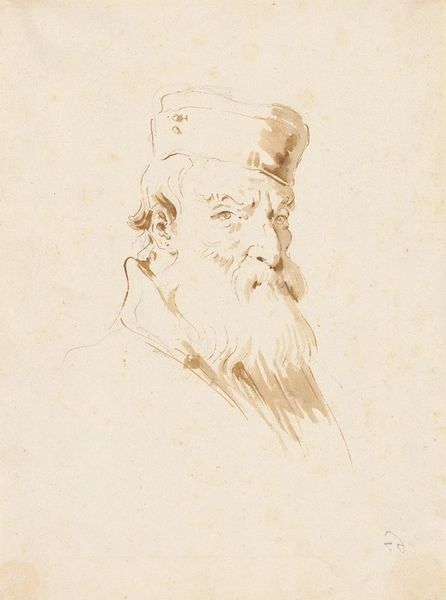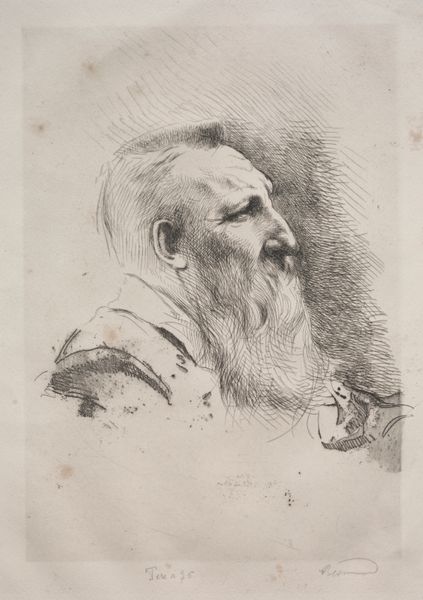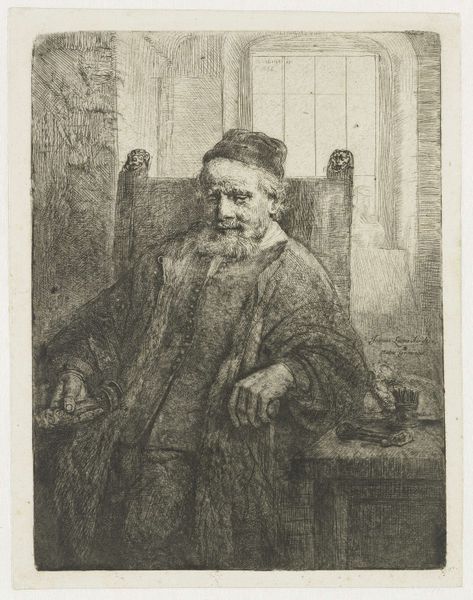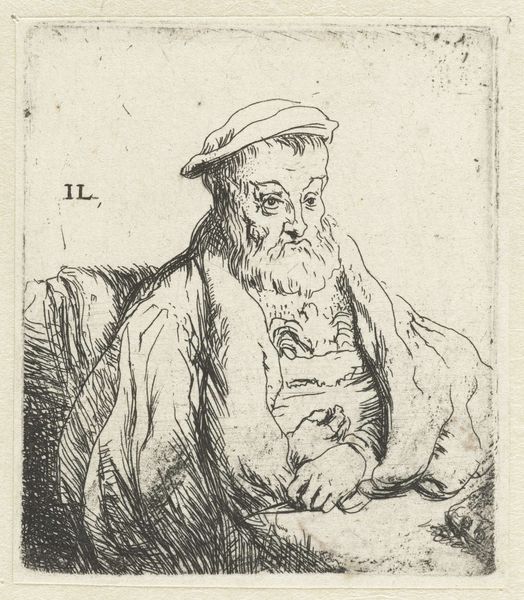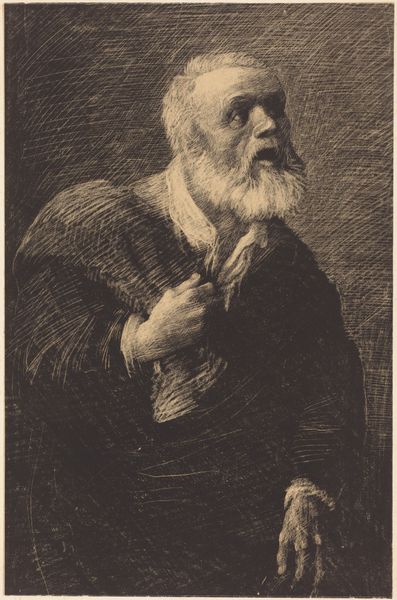
drawing, pencil
#
portrait
#
pencil drawn
#
drawing
#
amateur sketch
#
light pencil work
#
baroque
#
pen sketch
#
pencil sketch
#
personal sketchbook
#
pencil drawing
#
pen-ink sketch
#
pencil
#
sketchbook drawing
#
pencil work
#
history-painting
Copyright: Public Domain: Artvee
Curator: It's a powerful image, isn't it? We're looking at a pencil drawing titled "The Goldsmith Jan Lutma." Editor: Indeed. It's arresting—the level of detail captured with just pencil is impressive, but the old man has a weariness in his eyes that's really profound. You can feel the weight of experience in that portrait. Curator: Absolutely. What's fascinating is the artist's command over a seemingly simple medium, really bringing Lutma to life. Notice the intricate lines suggesting the folds in his garments. And look at the objects on the right; they read as professional tools, almost calling to be read like artifacts of a life spent at work. Editor: I'm drawn to his hands; the delicate yet firm grasp, the palpable presence of craftsmanship they convey. Given his trade, I wonder about the social context. Goldsmiths held significant standing, didn't they? Were they generally seen as trusted members of the community, both artisans and early financiers? Curator: They certainly held a position of prominence, particularly during the Baroque era, from which the artwork appears to have originated. As symbols go, a Goldsmith had powerful associations. The material gold signifies the pinnacle of alchemical transformation; this image then transcends a man at work and instead represents transformation and value. Editor: A potent message, even in something that might initially strike one as just a humble sketch. I'm also curious about the function of the drawing itself. Was it a preliminary sketch for a larger work, perhaps? Or was it conceived as a standalone piece? The expressiveness argues for a work with purpose. Curator: That's something we could probably dive into further. It may have been part of a collection, possibly studies by the artist, for other artworks depicting professionals. What a legacy of symbols he left us! Editor: Indeed, considering the portrait beyond just likeness and instead reflecting social status, artistic skill, and broader cultural values makes the work endlessly compelling, doesn't it? Curator: It does, I feel like it leaves us contemplating craftsmanship and how we should value it even today.
Comments
No comments
Be the first to comment and join the conversation on the ultimate creative platform.

